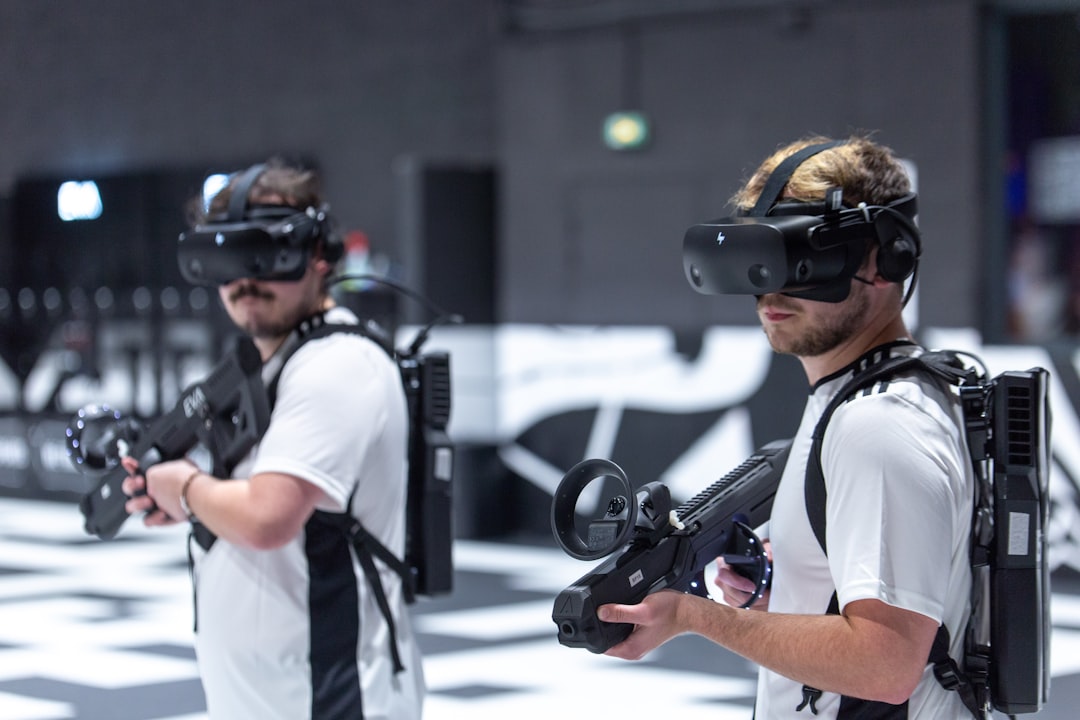The Metaverse is a collective virtual space that merges physical and digital realities, allowing users to interact with each other and the environment in real-time. It encompasses a vast array of interconnected virtual worlds, augmented reality experiences, and digital economies. The term itself has gained traction in recent years, particularly as advancements in technology have made immersive experiences more accessible.
The Metaverse is not merely a single platform; rather, it is an expansive ecosystem that includes social interactions, gaming, commerce, and creative expression. Users can engage in various activities, from attending virtual concerts to participating in business meetings, all within a shared digital environment. At its core, the Metaverse aims to create a seamless experience where the boundaries between the physical and digital worlds blur.
This convergence is facilitated by technologies such as virtual reality (VR), augmented reality (AR), and blockchain. VR immerses users in entirely digital environments, while AR overlays digital information onto the real world. Blockchain technology plays a crucial role in establishing ownership and authenticity of virtual assets, enabling users to buy, sell, and trade items securely.
As the Metaverse continues to evolve, it promises to redefine how we interact with technology, each other, and the world around us.
Key Takeaways
- The Metaverse is a collective virtual shared space, created by the convergence of virtually enhanced physical reality and physically persistent virtual reality.
- Virtual worlds have a long history, dating back to the 1970s with the creation of early text-based and graphical virtual environments.
- Popular virtual worlds in the Metaverse include Second Life, Decentraland, and Roblox, each offering unique experiences and opportunities for interaction.
- Accessing virtual worlds in the Metaverse can be done through various platforms such as VR headsets, web browsers, and mobile apps.
- Virtual worlds offer a social aspect, allowing users to interact, communicate, and collaborate with others in a shared digital environment.
The History of Virtual Worlds
The concept of virtual worlds has its roots in early computer graphics and online gaming. In the 1970s and 1980s, text-based environments like MUD (Multi-User Dungeon) allowed players to explore imaginary landscapes and interact with one another through text commands. These early platforms laid the groundwork for more sophisticated graphical environments that would emerge in the following decades.
The 1990s saw the rise of graphical MUDs and early MMORPGs (Massively Multiplayer Online Role-Playing Games) such as Ultima Online and EverQuest, which introduced players to expansive worlds filled with quests, characters, and social interactions. As technology advanced, so did the complexity and richness of virtual worlds. The launch of Second Life in 2003 marked a significant milestone in the evolution of online environments.
Unlike traditional games that focused on objectives and competition, Second Life offered users a sandbox experience where they could create their own content, socialize, and even conduct business. This platform demonstrated the potential for user-generated content and virtual economies, paving the way for future developments in the Metaverse. The emergence of social media platforms further contributed to this evolution by fostering online communities that transcended geographical boundaries.
Popular Virtual Worlds in the Metaverse

Several virtual worlds have gained prominence within the Metaverse, each offering unique experiences and opportunities for users. One of the most notable examples is Roblox, a platform that allows users to create and share their own games and experiences. With millions of active users, Roblox has become a cultural phenomenon among younger audiences, providing a space for creativity and social interaction.
Players can design their own avatars, build virtual environments, and participate in various games created by other users. The platform’s user-friendly development tools have empowered a generation of aspiring game designers. Another significant player in the Metaverse is Fortnite, which has evolved beyond a battle royale game into a social platform where players can attend concerts, watch movies, and engage in collaborative events.
Epic Games has leveraged its massive player base to create immersive experiences that blend gaming with entertainment. The introduction of cross-platform play has further expanded Fortnite’s reach, allowing users on different devices to interact seamlessly. This shift towards a more social gaming experience highlights the potential for virtual worlds to serve as gathering places for communities.
| Topic | Metrics |
|---|---|
| Virtual Worlds | Access, Usage, Engagement |
| Platforms | VR, AR, Web-based |
| Navigation | Controls, Interfaces, User Experience |
| Interactivity | Socializing, Gaming, Commerce |
| Challenges | Technical, Accessibility, Adoption |
Accessing the Metaverse requires a combination of hardware and software tailored to individual preferences and experiences. Most virtual worlds can be accessed through standard personal computers or gaming consoles, while others may require specialized equipment such as VR headsets for a fully immersive experience. Popular VR devices like the Oculus Quest or HTC Vive enable users to step into virtual environments with enhanced realism and interactivity.
However, many platforms also offer non-VR options for those who prefer traditional screens. Once equipped with the necessary hardware, users can explore various platforms by creating accounts on specific services. Each virtual world typically has its own set of rules, communities, and content creation tools.
For instance, joining Roblox involves creating an account on their website or app, where users can customize their avatars and start exploring user-generated games. Similarly, platforms like Decentraland or Cryptovoxels require users to create digital wallets to manage their virtual assets and currencies. As users navigate these worlds, they can discover unique experiences tailored to their interests.
The Social Aspect of Virtual Worlds
The social dynamics within virtual worlds are one of their most compelling features. Users can connect with friends or meet new people from around the globe, fostering relationships that transcend physical boundaries. Many platforms incorporate chat functions, voice communication, and even video capabilities to enhance interaction among users.
This social aspect is particularly evident in games like Animal Crossing: New Horizons, where players can visit each other’s islands and engage in cooperative activities. Moreover, virtual worlds often host events that bring communities together. Concerts in Fortnite or art exhibitions in Decentraland exemplify how these platforms can serve as venues for shared experiences.
Users can attend these events as avatars, interacting with others while enjoying performances or exploring creative displays. This sense of community is further amplified by user-generated content; players can collaborate on projects or participate in challenges that encourage teamwork and creativity.
Creating and Customizing Your Virtual Avatar

One of the most engaging aspects of participating in virtual worlds is the ability to create and customize avatars that represent users within these digital spaces. Avatars serve as personal expressions of identity and creativity, allowing individuals to showcase their unique styles and personalities. Most platforms offer extensive customization options ranging from physical attributes like hair color and body shape to clothing and accessories.
In addition to aesthetic choices, avatars can also embody various traits or abilities depending on the platform’s mechanics.
This level of customization not only enhances immersion but also allows users to experiment with different identities in a safe environment.
As technology advances, we may see even more sophisticated avatar creation tools that incorporate AI-driven features or real-time facial recognition.
The Economy of the Metaverse: Virtual Goods and Services
The economy within the Metaverse is rapidly evolving, driven by user-generated content and digital transactions. Virtual goods—ranging from clothing for avatars to unique items within games—have become significant commodities in this digital landscape. Platforms like Fortnite have introduced skins and emotes that players can purchase using real money or in-game currency.
These transactions not only enhance gameplay but also contribute to a thriving marketplace where creators can monetize their designs. Blockchain technology has further revolutionized this economy by enabling true ownership of digital assets through non-fungible tokens (NFTs). Artists and developers can create unique items that are verifiably owned by individuals, allowing for trading and resale on various marketplaces.
This shift has opened new avenues for creators to earn income while providing collectors with opportunities to invest in rare digital assets. As more users engage with these economies, we may witness an expansion of services such as virtual real estate development or freelance work within these digital realms.
The Future of the Metaverse: Trends and Developments
The future of the Metaverse is poised for significant growth as technological advancements continue to reshape our interactions with digital spaces. One prominent trend is the increasing integration of artificial intelligence (AI) into virtual worlds. AI can enhance user experiences by creating more responsive environments or generating dynamic content tailored to individual preferences.
For example, AI-driven NPCs (non-player characters) could provide personalized interactions based on user behavior or preferences. Additionally, as remote work becomes more prevalent, businesses are exploring ways to leverage the Metaverse for collaboration and communication. Virtual offices could provide immersive environments where teams can meet regardless of geographical constraints.
Companies like Meta (formerly Facebook) are investing heavily in developing tools that facilitate this transition into virtual workspaces.
With ongoing innovations in technology and an expanding user base eager to explore these new frontiers, the possibilities within the Metaverse are virtually limitless.
If you’re interested in learning more about the challenges and opportunities in the metaverse, particularly regarding privacy and security concerns, check out this insightful article on metaversum.it. The piece delves into the evolving user experiences and future trends in the metaverse, shedding light on how industries like healthcare and wellness are being impacted by this virtual world.
FAQs
What is the metaverse?
The metaverse is a collective virtual shared space, created by the convergence of virtually enhanced physical reality and physically persistent virtual reality.
What are some popular metaverse platforms?
Some popular metaverse platforms include Second Life, Decentraland, Roblox, and Fortnite.
What can you do in the metaverse?
In the metaverse, users can engage in various activities such as socializing, gaming, attending events, creating and trading virtual assets, and even conducting business.
How is the metaverse different from virtual reality?
Virtual reality typically refers to a fully immersive digital experience, while the metaverse encompasses a broader concept of a collective virtual shared space that can include various virtual and augmented reality experiences.
Is the metaverse the future of the internet?
Many experts believe that the metaverse has the potential to significantly impact the future of the internet, as it offers new ways for people to interact, work, and play in a virtual environment.

Leave a Reply